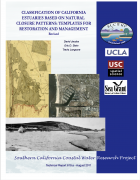Submitted on
Grassroots Coalition's Attorney Todd Cardiff's COMMENTS on
BALLONA WETLANDS Ecological Reserve Draft EIS/EIR
Environmental Impact Statement/ Environmental Impact Report State Clearinghouse No. 2012071090
TO: Email: BWERcomments@wildlife.ca.gov(link sends e-mail)
February 5, 2018
U.S. Army Corps of Engineers, Los Angeles District
Daniel Swenson, Regulatory Division 915 Wilshire Boulevard, Ste. 930, Los Angeles, CA 90017
California Department of Fish and Wildlife Richard Brody, CDFW, c/o ESA (jas)
550 Kearney Street, Suite 800, San Francisco, California, 94108
E-mail: BWERcomments@wildlife.ca.gov
RE: Comments on Ballona Wetlands Draft EIS/EIR Dear Mssrs. Swenson and Brody
Please consider these comments to be submitted on behalf of Grassroots Coalition. These comments are in addition to, and not intended to supplant any other comments or objections lodged by Grassroots Coalition.
1. The Range Of Alternatives Is Unlawfully Deficient Because of Factual Errors in the Description of the Historical Nature of the Ballona Wetlands.
One of the primary purposes of the EIR is to evaluate a “reasonable range of alternatives” that would reduce or avoid impacts. While an EIR need to not evaluate every alternative, “an EIR is required to consider those alternatives that will “attain most of the basic objectives” while avoiding or substantially reducing the environmental impacts of the project. (Watsonville Pilots Assn. v. City of Watsonville (2010) 183 Cal.App.4th 1059, 1087.)
In this case, the executive summary of the Draft EIR/EIS (hereinafter “DEIR”) states “the term Project with a capital “P” means restoration of the Ballona Reserve and incidental work necessitated by the proposed activities.” However, all the alternatives contemplated include the restoration of full tidal action when, historically, the Ballona Wetlands were primarily freshwater and were only subject to tidal action on the rare occasion that the rivermouth at Ballona Creek blew out during heavy rains. Thus, the term “restoration” is not accurate.
The historically freshwater nature of the Ballona Wetlands was discussed in a scientific paper prepared pursuant to the National Sea Grant Program (Grant # NA 06OAR4170012.) (Jacobs, Stein and Langcore “Classification of California Estuaries Based on Natural Closure Patterns: Templates for Restoration and Management” Southern California Coastal Water Research Project, Technical Report 619.a (August 2011 revised).) In the paper, Jacobs et. al. opine that:
Grassroots Coalition Comments on BWER DEIR February 5, 2018
Page 2 of 2
“the longshore drift of sand rapidly closed the berm connecting Ballona to the sea after major storms and a large freshwater lake was the rule, rather than the exception for the wetlands, even reaching inland up to five miles presumably as a consequence of perching of water behind a berm during modest stream flow episodes. These data are consistent with core data which show intermittent freshwater conditions in Ballona over the last 4,0000 [sic] years (Palacios-Fest et al. 2006).
(Classification of California Estuaries, at 34.)
Jacobs et. al., conclude that the Ballona Wetlands is not historically a saltwater marsh subject to tidal influence on a daily basis, but a freshwater wetlands (often a lake) that is intermittently open to the ocean after large storm events. (Id. at 25.) In fact, based on narrative histories, it appears that after a flood event in 1825, where the Los Angeles River shifted away from Ballona Creek, the estuary mouth was increasingly closed.
Click here for 67 Page Report by David Jacobs, Eric D. Stein, and Travis Longcore
http://www.urbanwildlands.org/Resources/619.a_EstuarineClassificationRes...
An accurate definition of “restoration” is important. Unless ACOE and CDFW can cite to other information that demonstrates that the Ballona Wetlands was historically a salt-water marsh, it cannot claim that the project is for restoration of the Ballona Wetlands.
Sincerely,
Todd T. Cardiff, Esq.

Click here for 67 Page Report by David Jacobs, Eric D. Stein, and Travis Longcore
http://www.urbanwildlands.org/Resources/619.a_EstuarineClassificationRes...
- 2317 reads

